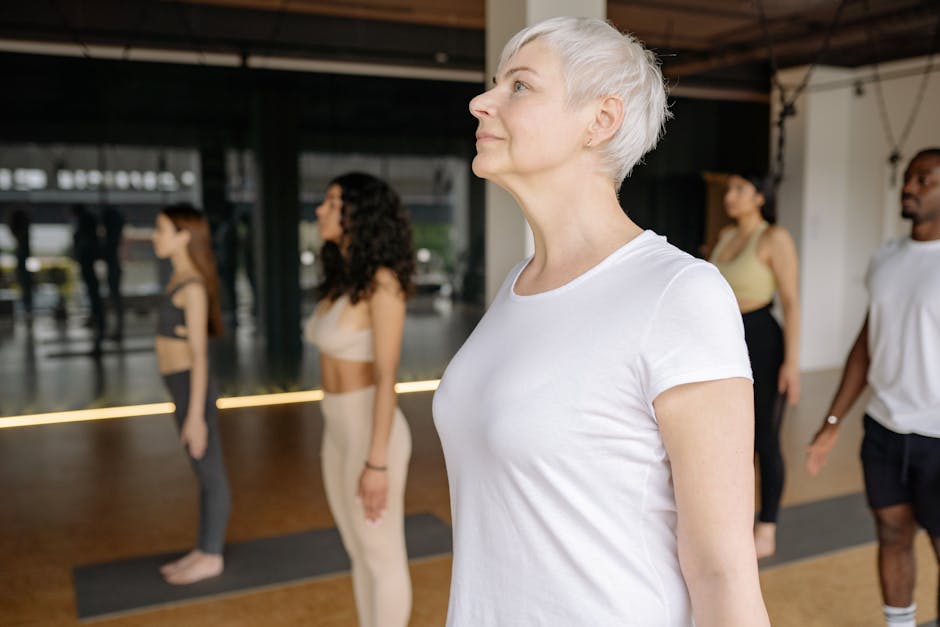Cognitive Yoga: Unlocking Neuroplasticity and Mindfulness Today
The mind is a fascinating landscape, capable of incredible transformations. Imagine a practice that merges the principles of yoga and meditation with the latest findings in neuroscience. That's where cognitive yoga comes in: a powerful approach that not only nurtures spiritual growth but also harnesses neuroplasticity to enhance brain health. In today’s fast-paced world, understanding and practicing cognitive yoga may just be the key to unlocking profound mental and emotional growth.
Understanding Cognitive Yoga

Cognitive yoga is an innovative practice that goes beyond traditional yoga poses and meditative breathing. It combines mindfulness techniques with insights from modern neuroscience, particularly neuroplasticity. Neuroplasticity refers to the brain's incredible ability to reorganize itself by forming new neural connections throughout life. This means that our thoughts, emotions, and experiences can literally reshape our brains.
By integrating cognitive training and mindful awareness, cognitive yoga aims to foster not just physical flexibility but also mental resilience. As we explore this practice, we will uncover elements such as mindfulness, concentration, and self-awareness that are essential for personal growth.
The Benefits of Neuroplasticity in Yoga

Neuroscientific research has revealed fascinating insights about neuroplasticity. Engaging in consistent mindfulness practices can lead to structural changes in the brain. For instance, studies have shown that meditation can increase the gray matter in regions of the brain associated with self-awareness and compassion. When combined with the physical practice of yoga, the benefits magnify.
Imagine practicing a series of yoga poses while focusing your mind on specific intentions. The movement becomes more than just an exercise; it transforms into a profound opportunity for rewiring your brain and enhancing your spiritual journey. By marrying these two worlds, cognitive yoga paves the way for a holistic approach to personal development.
Enhancing Mindfulness Through Movement

At the heart of cognitive yoga lies mindfulness. Mindfulness is the active process of maintaining awareness of the present moment without judgment. It encourages us to engage fully in whatever we are doing, making our yoga practice not just a series of stretches but a guided journey inward.
In cognitive yoga, each pose is made intentional by grounding it in mindfulness. For instance, as you flow through a sun salutation, you can concentrate on your breath while also reflecting on your thoughts and emotions. This dual focus can help you develop a deeper understanding of yourself and facilitate emotional resilience.
One way to cultivate this awareness is by practicing with the intention of releasing negative thoughts. You might find this approach resonates with quantum yoga, where intention and energy intertwine to enhance spiritual awakening.
Practical Techniques for Cognitive Yoga

Now that you understand the foundational concepts, let's explore how to integrate cognitive yoga into your daily routine. Here are some practical techniques you can try:
Breathing Exercises

Breath is your anchor in both yoga and mindfulness. Start with a few minutes of deep breathing before transitioning into your asanas. A technique like diaphragmatic breathing can calm the nervous system and prepare your brain for the upcoming session.
- How to Practice: Sit comfortably with a straight spine. Inhale deeply through your nose, allowing your abdomen to expand. Hold your breath for a few seconds, then exhale slowly through your mouth. Repeat this for five to ten minutes.
Mindful Movement

During your yoga practice, prioritize the connection between movement and breath. Pay attention to how your body feels in each position. This awareness can create a meditative state that reinforces neural connections associated with mindfulness.
- How to Practice: Try a slow vinyasa flow, focusing intently on your movements. Visualize each transition, connecting each breath with a new position.
Intention Setting
Before beginning your practice, dedicate your session to a specific intention. This could be anything from cultivating love for yourself to releasing feelings of anxiety. The power of intention can guide your thoughts throughout your practice.
- How to Practice: Take a few moments to sit in stillness and ask yourself what you would like to achieve during your session. Write it down or simply hold it in your mind as you move through your asanas.
The Role of Meditation in Cognitive Yoga
Meditation plays a crucial role in strengthening the effects of cognitive yoga. Meditation allows for exploration of thoughts without attachment. This enhances self-awareness and enables us to observe our mental patterns without judgment.
Incorporate meditation into your routine by setting aside time to practice mindfulness or guided meditation before your yoga session. Research supports this, revealing that meditation can improve attention, emotional regulation, and even increase the thickness of the prefrontal cortex, a brain region responsible for complex cognitive behavior.
Real-World Applications of Cognitive Yoga
Cognitive yoga isn’t just for stress relief; it has real-world applications in enhancing cognitive function and spiritual growth. Educational institutions and corporations have begun recognizing the importance of mindfulness and yoga in improving productivity and mental clarity.
For instance, schools are introducing yoga programs to help students manage stress and improve concentration. Similarly, workplaces are creating wellness initiatives that incorporate meditation and yoga sessions to foster a healthier work environment. This growing trend highlights the powerful benefits of cognitive yoga in various settings.
You can explore more about the unique interactions of yoga and wellness in pieces like Unlock creativity through pranayama, emphasizing how your breath can influence cognitive states to enhance creativity.
Overcoming Barriers to Practice
While cognitive yoga can be transformative, some people still encounter barriers that prevent them from engaging fully in their practice. These might include distractions, self-doubt, or time constraints. Here are some strategies to overcome these barriers:
Cultivating Discipline
Establishing a routine can enhance your commitment to cognitive yoga. Choose a specific time each day for practice, and gradually build up the duration and complexity of your sessions.
Finding Community
Consider joining a yoga or meditation group. Practicing with others can motivate you to stick with your commitment and deepen your understanding of the practice.
Leveraging Technology
Apps offering guided meditations and yoga sessions can help you stay engaged. Use these resources to make your practice more accessible, especially if you have a busy schedule.
Integrating Cognitive Yoga into Everyday Life

The beauty of cognitive yoga is that it can be practiced anywhere, at any time. You don't need to be on a yoga mat to experience its benefits. Here are some tips:
-
Mindful Walking: Turn a simple walk into a meditative experience by focusing on your breath and your surroundings. Notice each step, the texture of the ground, and the rhythm of your breathing.
-
Daily Rituals: Be mindful during everyday activities. Whether it’s washing the dishes or drinking your morning coffee, place your full attention on the experience, allowing it to become a form of meditation.
Exploring Further: Resources and Studies
To reinforce your understanding of cognitive yoga, consider diving deeper into the research and literature surrounding mindfulness and neuroplasticity. High-quality resources can offer insights you may not have previously encountered. For example, studies published in journals like Harvard Business Review and various psychology websites highlight ongoing investigations into mindfulness meditation and its impact on brain health.
You might also enjoy reading articles about the healing vibrations of sound frequencies, which provide another layer of enhancement to spiritual practices.
Final Thoughts
As you embark on your journey with cognitive yoga, remember that spiritual growth and brain health are not destinations but ongoing processes. Embrace the transformative power of mindfulness and neuroplasticity in your practice. By weaving these concepts together, you will cultivate a deeper connection with both your mind and spirit.
Start incorporating these techniques into your routine today—you might just find that the key to unlocking your fullest potential was waiting to be discovered through the union of yoga, meditation, and the incredible adaptability of your brain.



